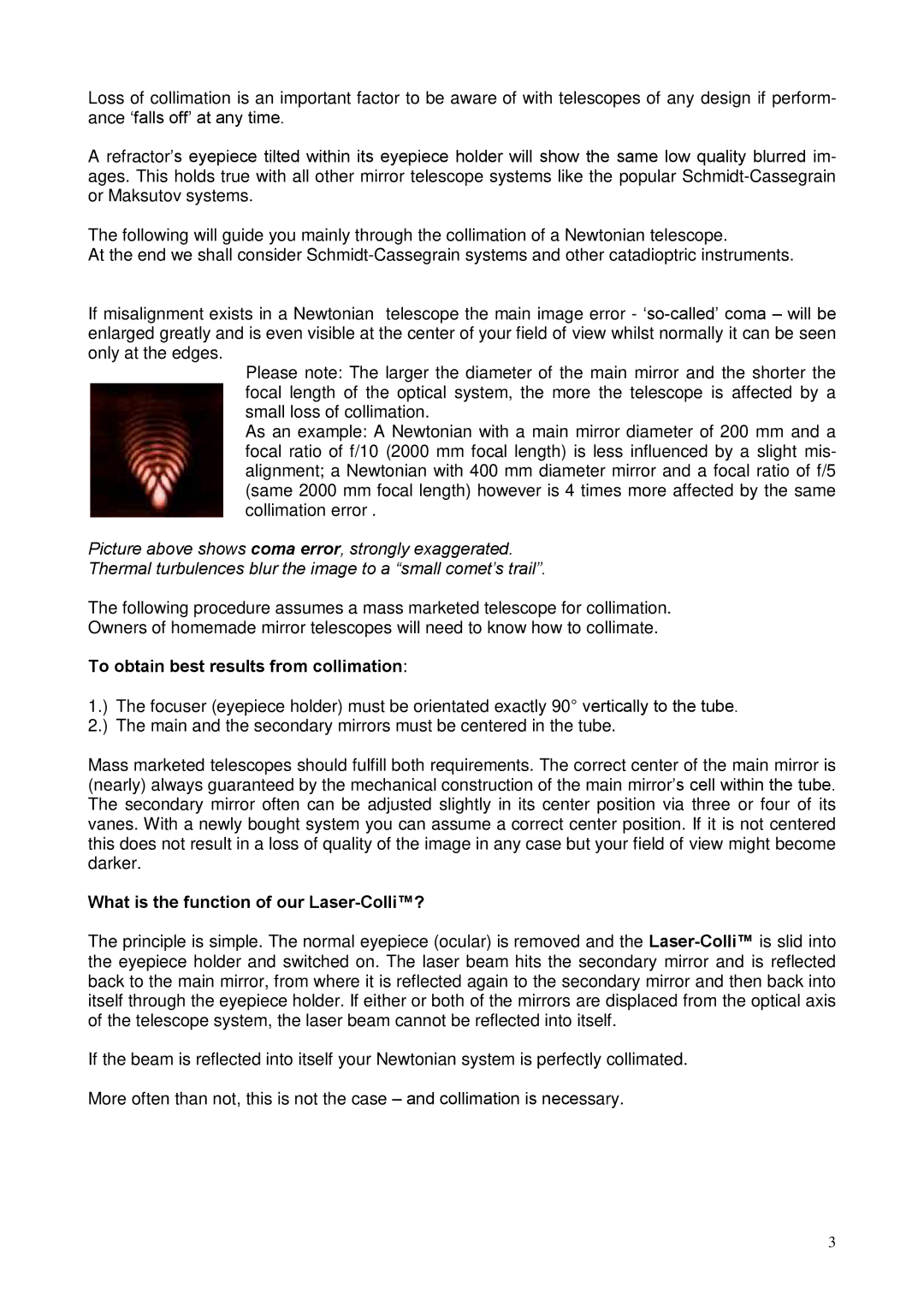
Loss of‘fallscollimoff’ationt anyistimean important. factor to be aware of with telescopes of any design if perform- ance
A refractor’s eyepiece tilted within its eyepiece holder will show the same low quality blurred im- ages. This holds true with all other mirror telescope systems like the popular
The following will guide you mainly through the collimation of a Newtonian telescope.
At the end we shall consider
If misalignment exists in a Newtonian telescope the main image error -
Please note: The larger the diameter of the main mirror and the shorter the focal length of the optical system, the more the telescope is affected by a small loss of collimation.
As an example: A Newtonian with a main mirror diameter of 200 mm and a focal ratio of f/10 (2000 mm focal length) is less influenced by a slight mis- alignment; a Newtonian with 400 mm diameter mirror and a focal ratio of f/5 (same 2000 mm focal length) however is 4 times more affected by the same collimation error .
Picture above shows coma error, strongly exaggerated.
Thermal turbulences blur the image to a “small comet’s trail”.
The following procedure assumes a mass marketed telescope for collimation. Owners of homemade mirror telescopes will need to know how to collimate. To obtain best results from collimation:
1.) The focuser (eyepiece holder) must be orientated exactly 90° vertically to the tube.
2.) The main and the secondary mirrors must be centered in the tube.
Mass marketed telescopes should fulfill both requirements. The correct center’sofcellthewithinmainthemirrortubeis. (nearly) always guaranteed by the mechanical construction of the main mirror
The secondary mirror often can be adjusted slightly in its center position via three or four of its vanes. With a newly bought system you can assume a correct center position. If it is not centered this does not result in a loss of quality of the image in any case but your field of view might become darker.
What is the function of our Laser-Colli™?
The principle is simple. The normal eyepiece (ocular) is removed and the
If the beam is reflected into itself your Newtonian system is perfectly collimated. More often than not, this is not the case – and collimation is necessary.
3
